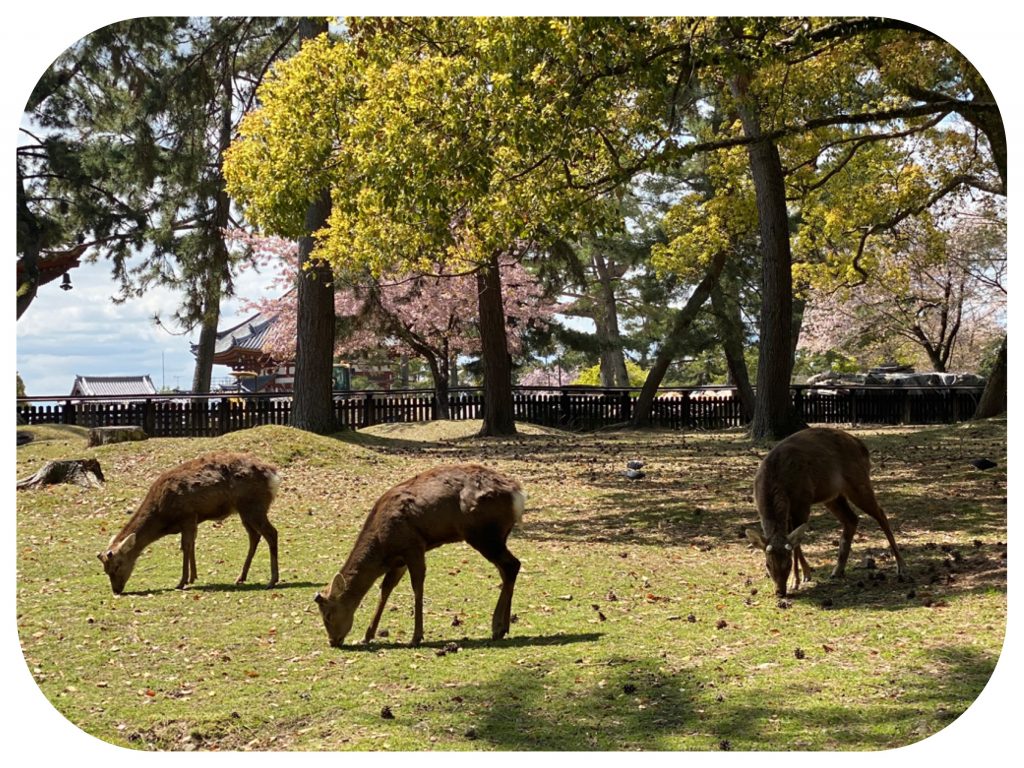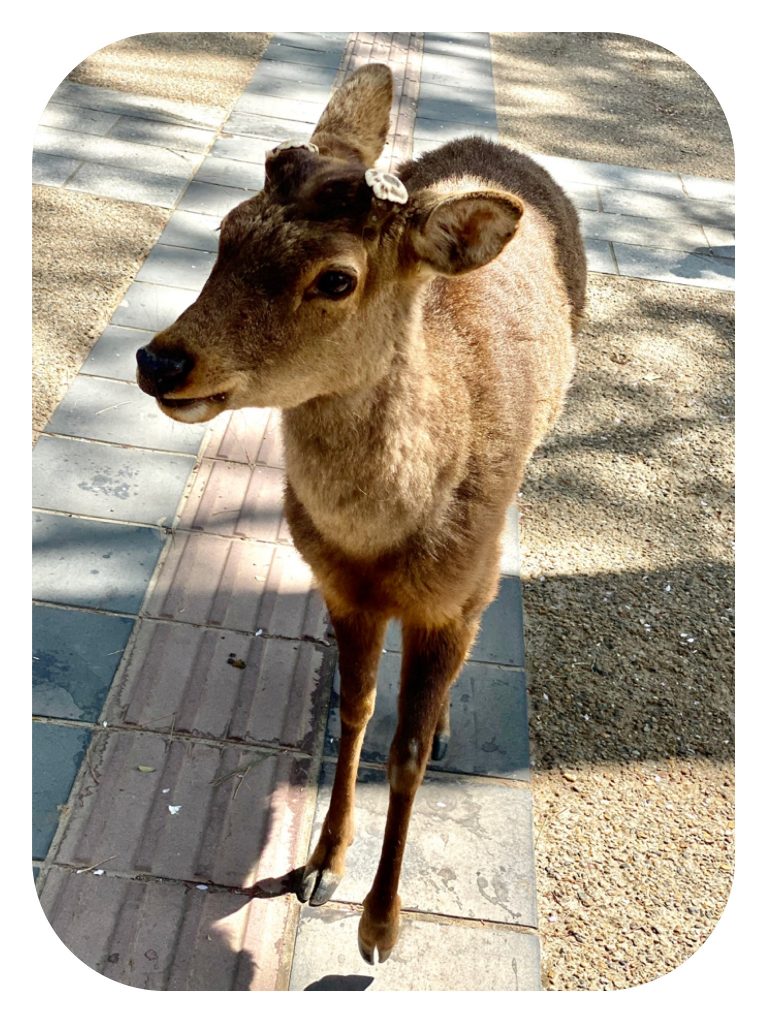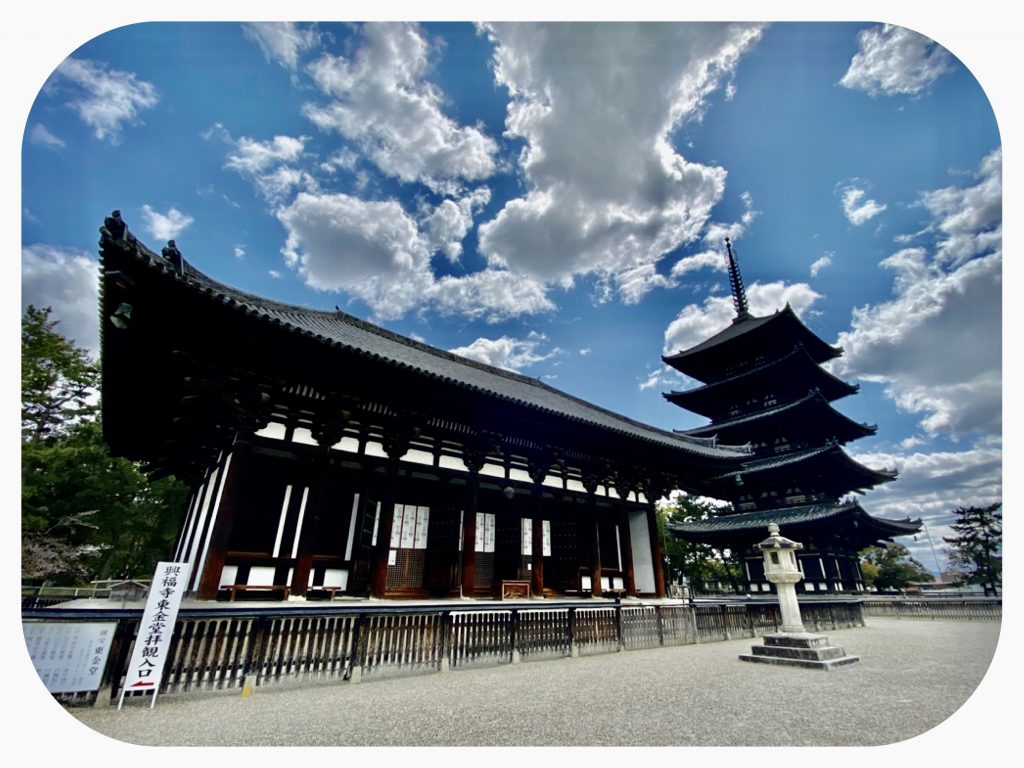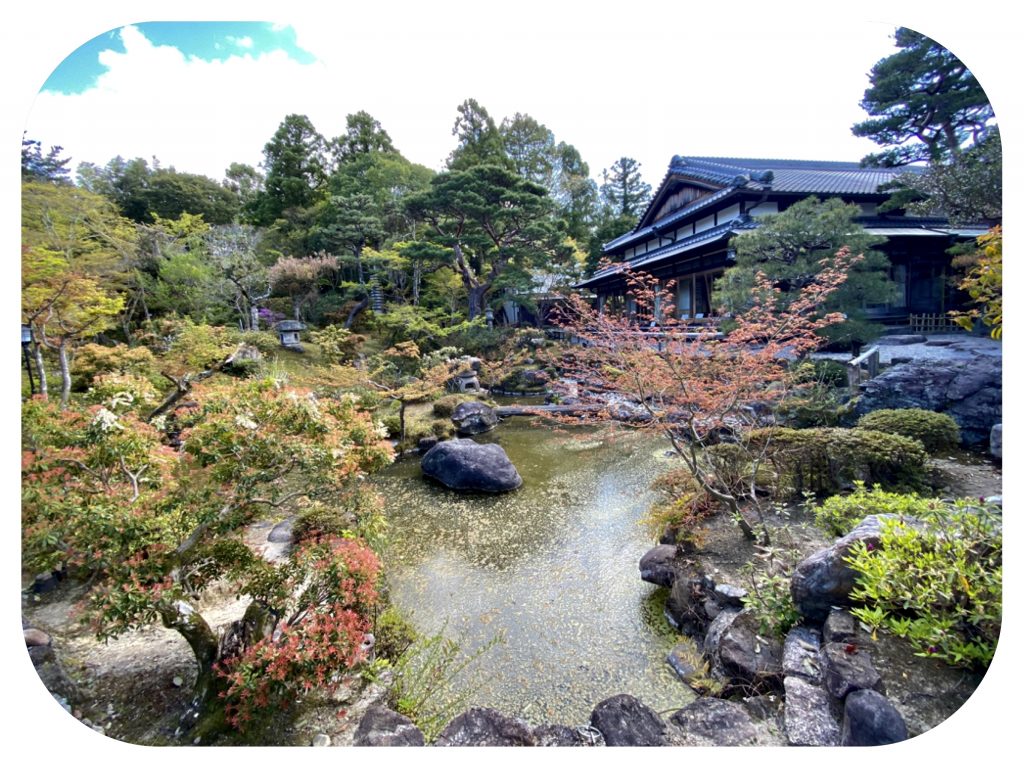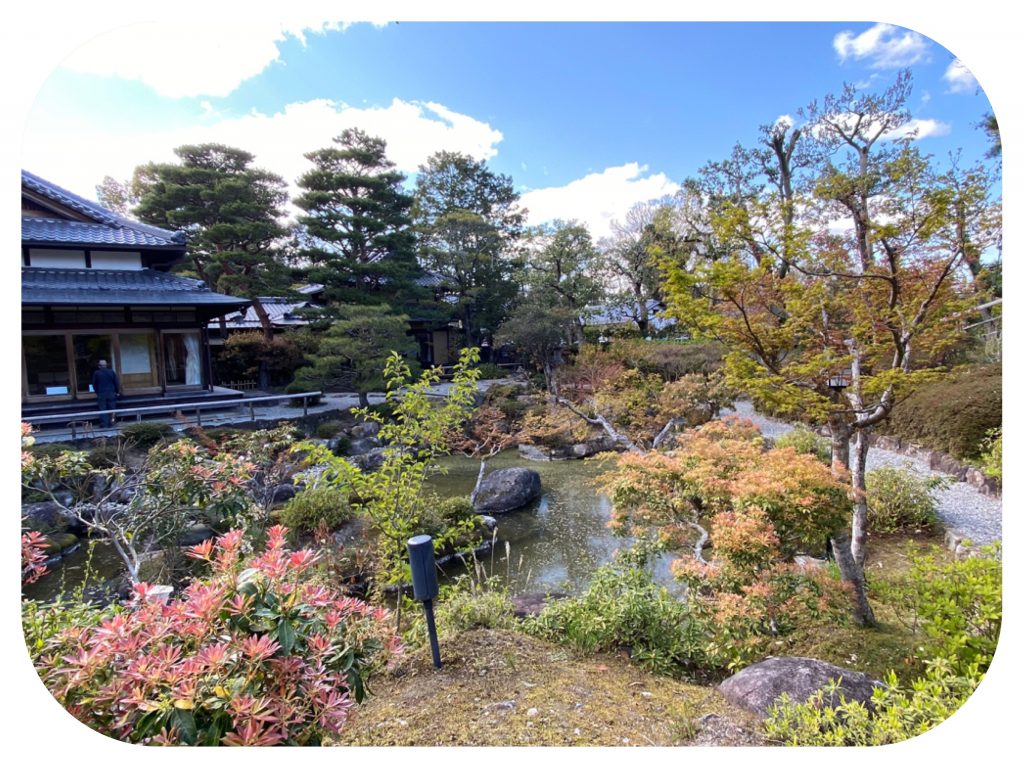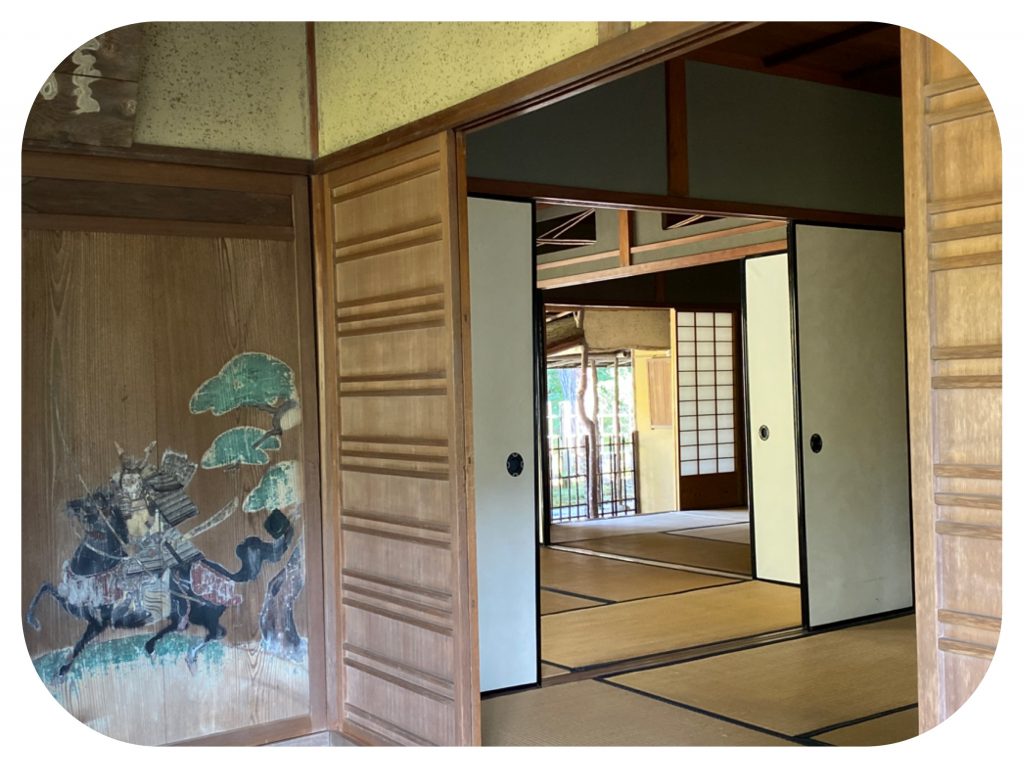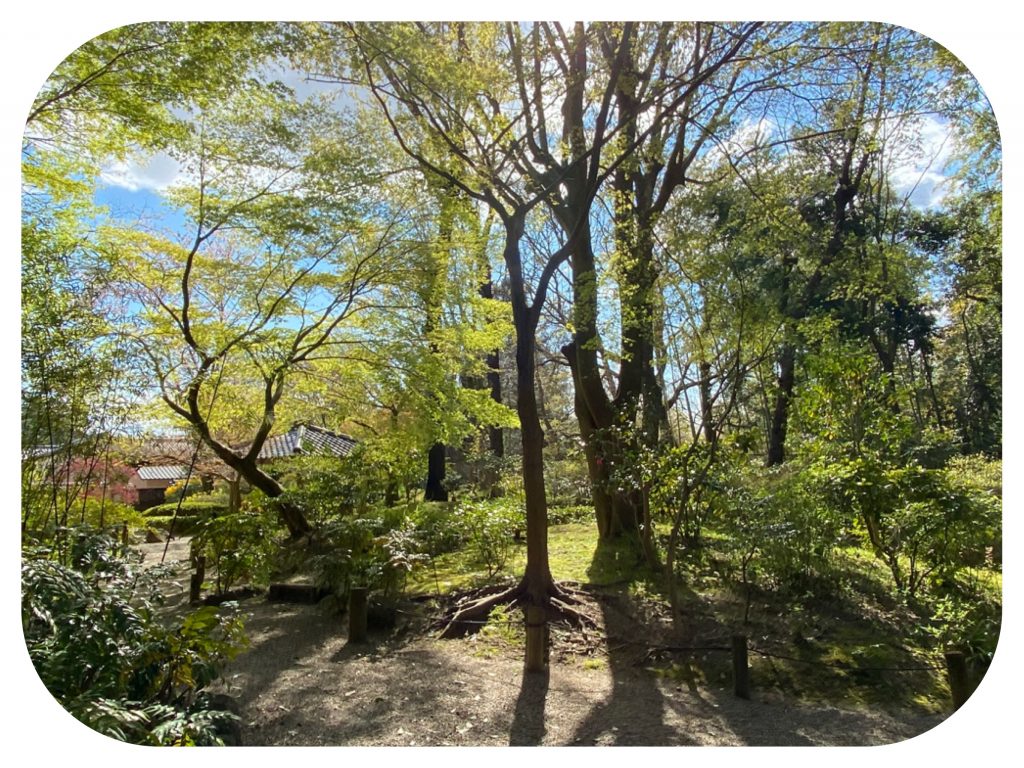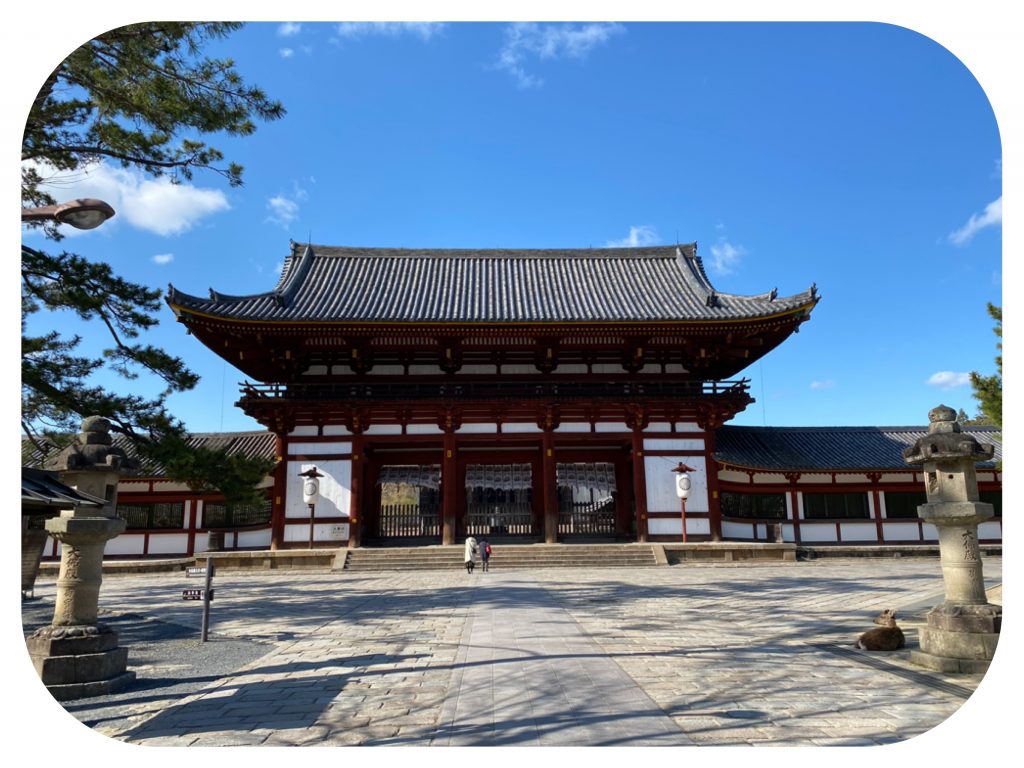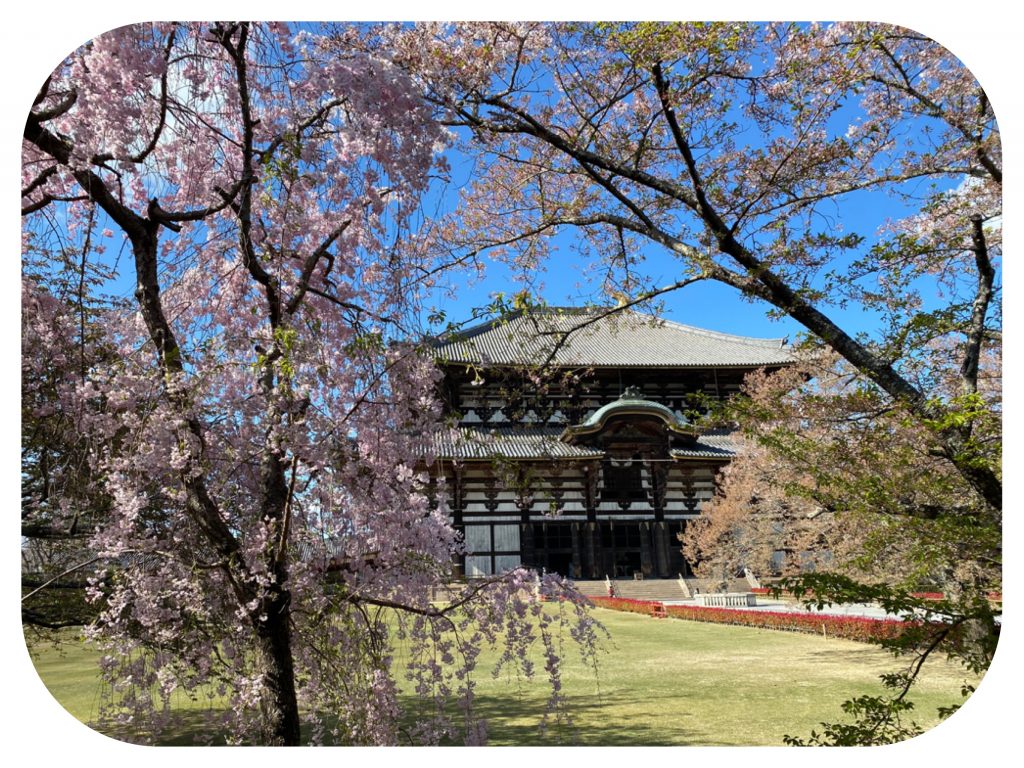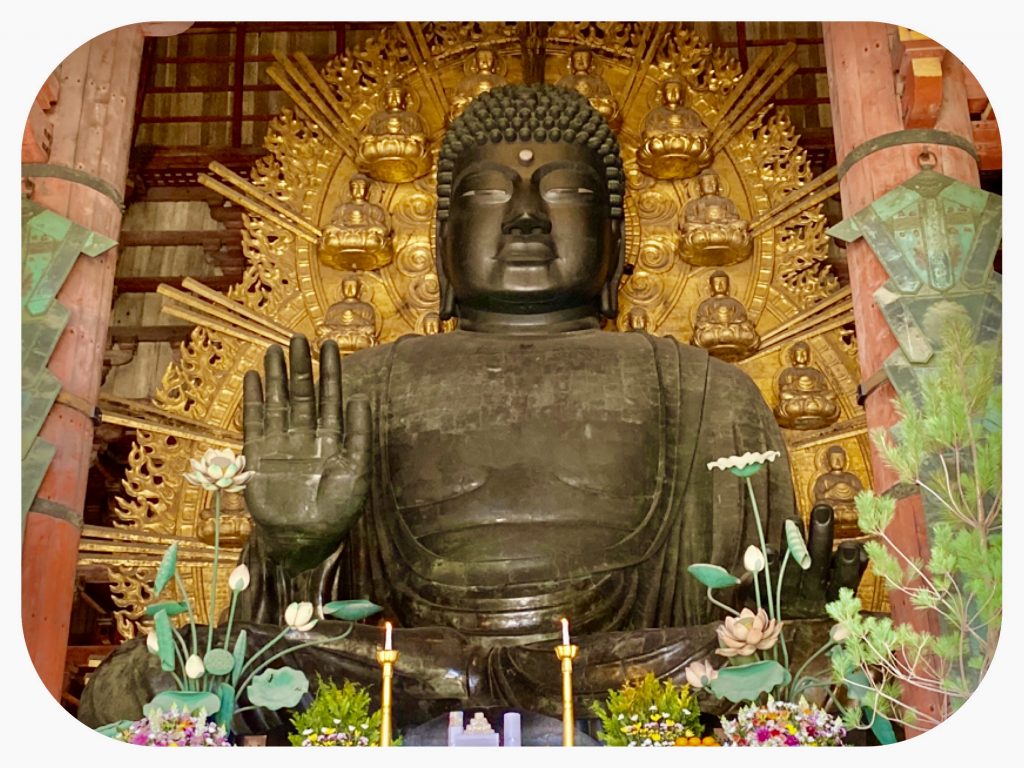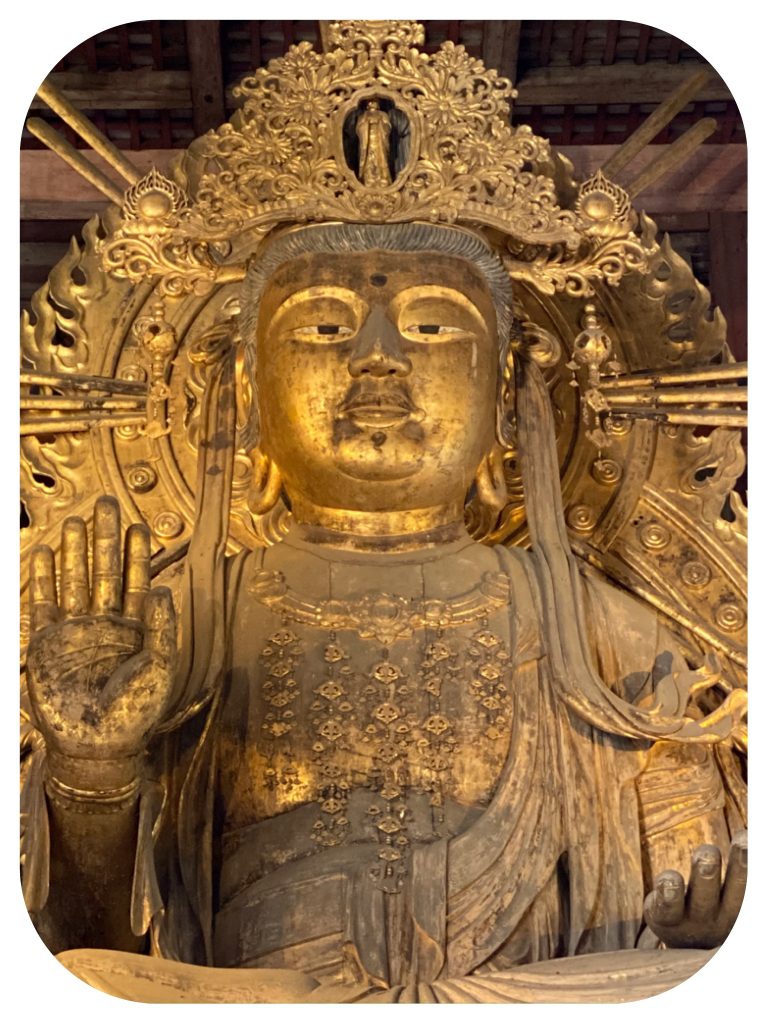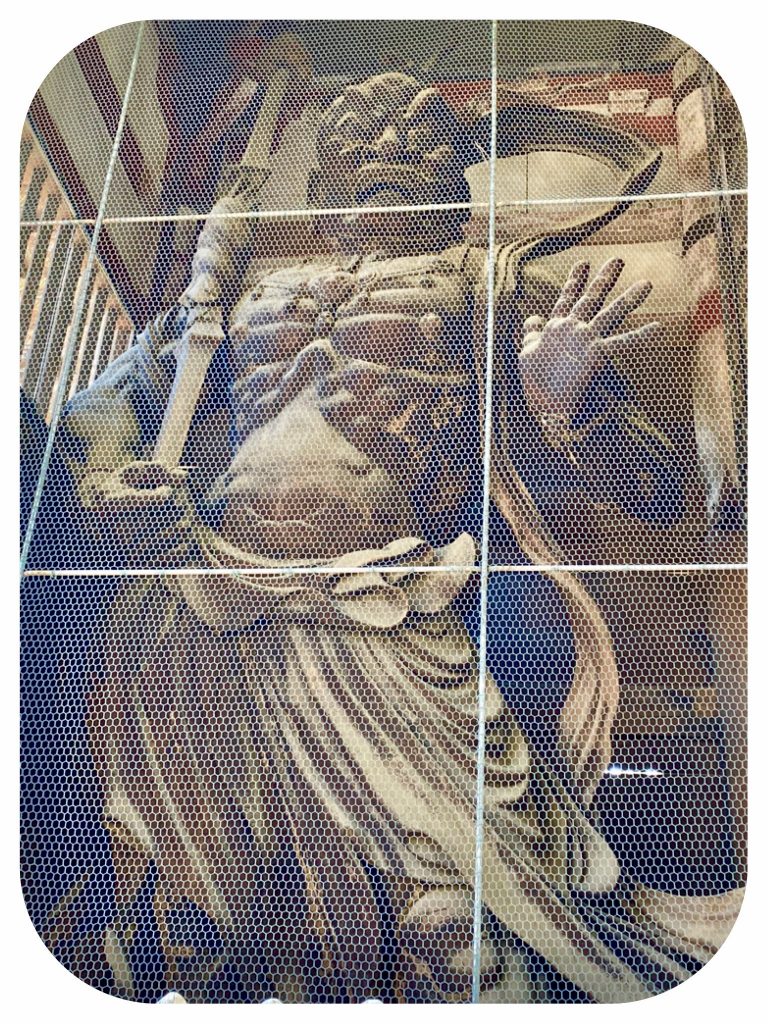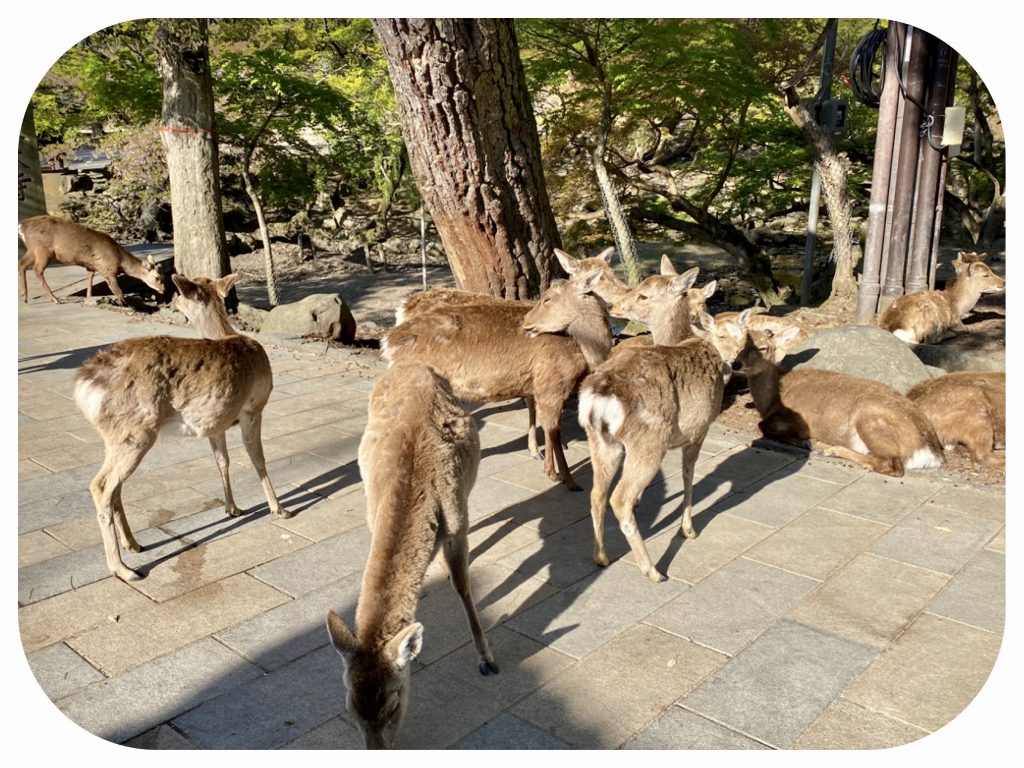Day 24 - The Road To Enlightenment - Walking The Saigoku Kannon Pilgrimage - Kohfukuji, Temple #9, and Todaiji Temple, Nara, Japan
Day 24 - The Road To Enlightenment - Walking The Saigoku Kannon Pilgrimage - Kohfukuji, Temple #9, and Todaiji Temple, Nara, Japan
Despite our feelings of doom and gloom, with the covid-19 cloud on our minds, the days of our pilgrimage seem to pass along pleasantly.
Everything we plan works out well, and it has been easy to make changes as necessary.
We eat well, stay in lovely places, meet lovely people who are friendly towards us, visit the temples that are all open, and we feel healthy and strong.
We are now visiting places that we know, since we have visited them before during previous trips.
But now that we are on a pilgrimage, there is an added sense of purpose to our visits.
We are staying in Nara in a hot springs hotel.
It has nice aesthetics with tatami mats all through the hotel, and muted color, clean rooms.
Originally we had planned to stay here three nights, and spend the days visiting the two remaining Nara temples on our pilgrimage, and then catch up on walking forward towards our next temple in Uji.
But we had to make some last minute changes to our plans.
After Japan declared a state of emergency and requested a virtual shutdown in seven prefectures, our hotel in Uji decided to close down and cancel our reservations.
Uji is located really close to Kyoto, where finding a hotel is still an easy task, but the Kyoto Prefecture, which only has had 170 cases, has asked to be added to the government emergency status list, and if that happens, hotels may be required to close also.
While we visited a beautiful mature garden in Nara, we chatted with the lady who works at the entrance to the garden.
The garden was very scenic, with ponds, a traditional tea house, a moss garden, and two flower gardens.
The lady expressed her sympathies at how difficult it must be to do a pilgrimage in these times of the virus, and suggested that if we have a problem with hotel cancellations, we can always stay longer in Nara, and take the train at the end of our walking days.
Her suggestion stayed in my mind, and when we got the Uji hotel cancellation, we decided to extend our stay in Nara by two days and use the train to return home at the end of each day.
Meantime, Nara, without the usual crowds of tourists, is so pleasant.
We visited Nara twenty years ago, but during the ensuing years, it became too popular, overrun by crowds.
The lady told us that she had moved to Nara ten years ago from eastern Japan, and had seen the place get too popular with the tourists.
She was happy to enjoy these quiet days, when Nara feels almost as quaint as it did in the past.
Kohfuku-ji Temple is located in the middle of Nara park.
Deer with distinctive white butts have lived in this park for over a thousand years.
They have no fear of people, and they roam the streets surrounding the park at their leisure.
With a history of more than 1,300 years, Kohfukuji is among Japan’s oldest and most famous Buddhist temples.
It was built in 669, when Kagami no Ōkimi founded a Buddhist chapel, Yamashinadera, in modern-day Kyoto Prefecture, to pray for the recovery of her husband Fujiwara no Kamatari (614–669) from illness.
In 672, the temple was moved to Umayasaka in Nara Prefecture and then again relocated to its present site in 710.
The name Kohfukuji means the “Temple that Generates Blessings.”
The temple belongs to the Hossō School of Buddhism which, following the teachings of the Buddha, states that: “All things (phenomena) are mind projections, created by the mind which experiences them.”
The Chinese monk Genbō, introduced the mind projections idea to Kohfukuji in the year 735.
During the Nara (710–794) and Heian (794- 1180AD) periods, the temple expanded rapidly under the patronage of the court and the powerful Fujiwara clan.
In the 15th century, Kohfukuji entered a period of political and economic decline that culminated in a catastrophic fire which destroyed most of the temple complex in 1717.
During the early Meiji Period (1868–1912), Kohfukuji was targeted by the anti-Buddhist policies of the central government.
It was forcibly separated from the Kasuga Shrine with which it had merged, and was ultimately abandoned by its monks.
It was eventually granted permission to reestablish itself as a religious institution, and continues today as the head temple of the Hossō Sect of Buddhism.
Kofukuji has a few buildings hosting beautiful sculptures.
Next to the main hall there is a 50 meter tall Five-Story Pagoda, another Three-Story Pagoda, and the Kofukuji National Treasure Museum.
The museum is not to be missed.
We paid the admission and admired the beautiful collection of priceless Buddhist art and statuary inside, featuring a set of guardians, including a standing dry-lacquer figure of a three-faced, six-armed Ashura (one of the Buddha's eight protectors) and the bronze head of Yakushi Nyorai, the Healing Buddha.
The Five-Story Pagoda, which was completely restored in 1426, is the second tallest pagoda in Japan, behind the 55m-tall pagoda in Toji temple in Kyoto.
Once, we stayed two weeks in Kyoto, very close to Toji temple, and saw the lit pagoda every night.
The Kofukuji temple complex has two octagonal buildings, containing yet more ancient Buddhist treasures, but it has restricted opening days to the public.
One of the octagonal buildings is where Saigoku pilgrims pray and get their calligraphy stamps.
The two monks were very friendly and curious about us, and it warmed our hearts.
Kohkufuji is the only Saigoku temple located in central Nara, but we also wanted to visit Tōdai-ji temple, which we had visited twenty years ago, and pray to the three giant Buddhas enshrined in it.
Before going to Tōdai-ji, we had lunch at a surprisingly delicious pizza and pasta restaurant.
They had a lunch set which was very lovely.
On our walk towards Tōdai-ji, we saw that the local Starbucks cafe was open.
They revised their opening hours, to close the cafe at 7 pm, as per the government suggestion.
We were happy to get some tea and rest.
As pilgrims, we are not night creatures.
We don’t last long at night after a full day of walking, so we just want to eat dinner, bathe and rest. We do not expect to be terribly inconvenienced by the new restrictions.
We noticed that the only shops that were closed around Nara were ones that catered exclusively to tourists.
All other shops and restaurants that serve the locals are open and seem to be doing business.
Tōdai-ji Temple is a World Heritage Site, and visiting it has a significant meaning to me now.
First of all, it was here in this temple, that I made my commitment to Enlightenment above all else in this lifetime.
Twenty years ago while standing in the main hall of Tōdai-ji, I was given a piece of wood called Ema, on which people write their deepest heart’s wishes, which they hope will come true.
At that time, the wooden Ema planks were hung on a wall in the temple and once per month, they were burnt in a blessing ceremony.
I still remember holding the Ema in my hands, contemplating what to ask as my deepest desire in this lifetime.
One word flashed across my mind: “ENLIGHTENMENT!”
And I put it down and signed my name below it.
Standing in the hall this time, with almost no one around, we chanted the Buddha’s Lotus Heart Sutra with the most heartfelt sincerity, with the monks and temple staff almost clapping with enthusiasm.
When I turned towards them to buy a calligraphy stamp, they all beamed at me warmly and opened their little window in invitation.
I didn’t know who to approach and just found myself drifting towards a woman who complimented our chanting and how I had memorized it all.
The second reason visiting Tōdai-ji was important to me, was the coronavirus.
Tōdai-ji has had a similar history.
In the year 735, an epidemic of smallpox caused countless deaths all over Japan.
Emperor Shōmu ordered the building of a colossal statue of the Buddha, to ward off the disease.
500 tons of brass were used to erect the 54 foot high Buddha at the center of the hall.
There are also two other Buddhas of the future sitting on the right and left sides of the Main Buddha, and an eleven-faced Kannon Goddess.
We bowed and said a heartfelt prayer for the end of the coronavirus all around the world.
Tōdai-ji used to be the chief temple in the Kokubun-ji system, and it was a center of prayers and rituals of the nation, praying for the wellbeing and prosperity of the people and the nation.
It was also a center for the training of scholarly monks who studied the Buddhist doctrine.
In the year 855, the head of the Great Buddha fell off during a major earthquake.
The image was quickly restored, but in future years, fires and lightning destroyed the Lecture Hall, the Monks’ Quarters and the West Pagoda.
In 1180, more than half of the compound including the Great Buddha Hall was destroyed in the fire that resulted from the attack on the Nara temples by Taira no Shigehira.
A year later the restoration of the temple started again by the monk Chōgen (1121-1206) and in 1185, the Great Buddha was consecrated again.
In 1567, the temple burned again during a conflict between the Miyoshi and Matsunaga clans.
Only a few buildings remained standing.
Because the country was at war, restoration was extremely difficult, and the only repairs that could be made were to cover the head of the Great Buddha with copper sheathing.
Finally, in the mid-Edo period the monk Kōkei (1648-1705) petitioned the shogunate government for permission to solicit donations throughout the land and to seek the assistance of some powerful warlords to restore the temple.
As a result of these efforts, the present Great Buddha was consecrated in 1692 and the Great Buddha Hall was finished In 1709.
During the Meiji period in 1868, legislation was declared to separate Shinto Shrines from the Buddhist religion.
The Meiji government confiscated many temple’s properties throughout the land.
However, Tōdai-ji temple managed to survive, and carry out major repairs to the Great Buddha Hall.
Tōdai-ji was able to preserve many precious cultural treasures from its past.
We had dinner near our hotel, in an eatery that served rice bowls with toppings, and some vegetable dishes.
After soaking in the onsen, we got some emails with more hotel cancellations, but I had no energy to deal with them.
Sometimes you just have to let things be, and deal with it when you have sufficient energy to handle them....
Wishing you a wonderful day,
Tali and Jules
Daily stats:
Steps walked - 20,057
15 km. walked
Active walking time - 4 hours
Total walking time today - 7 hours.
Total walking distance on the Saigoku to date - 472 km
Temple Visited:
Kofuku-ji, Temple #9 in Nara
Tōdai-ji Temple in Nara (A World Heritage Site, but not part of the Saigoku.)


